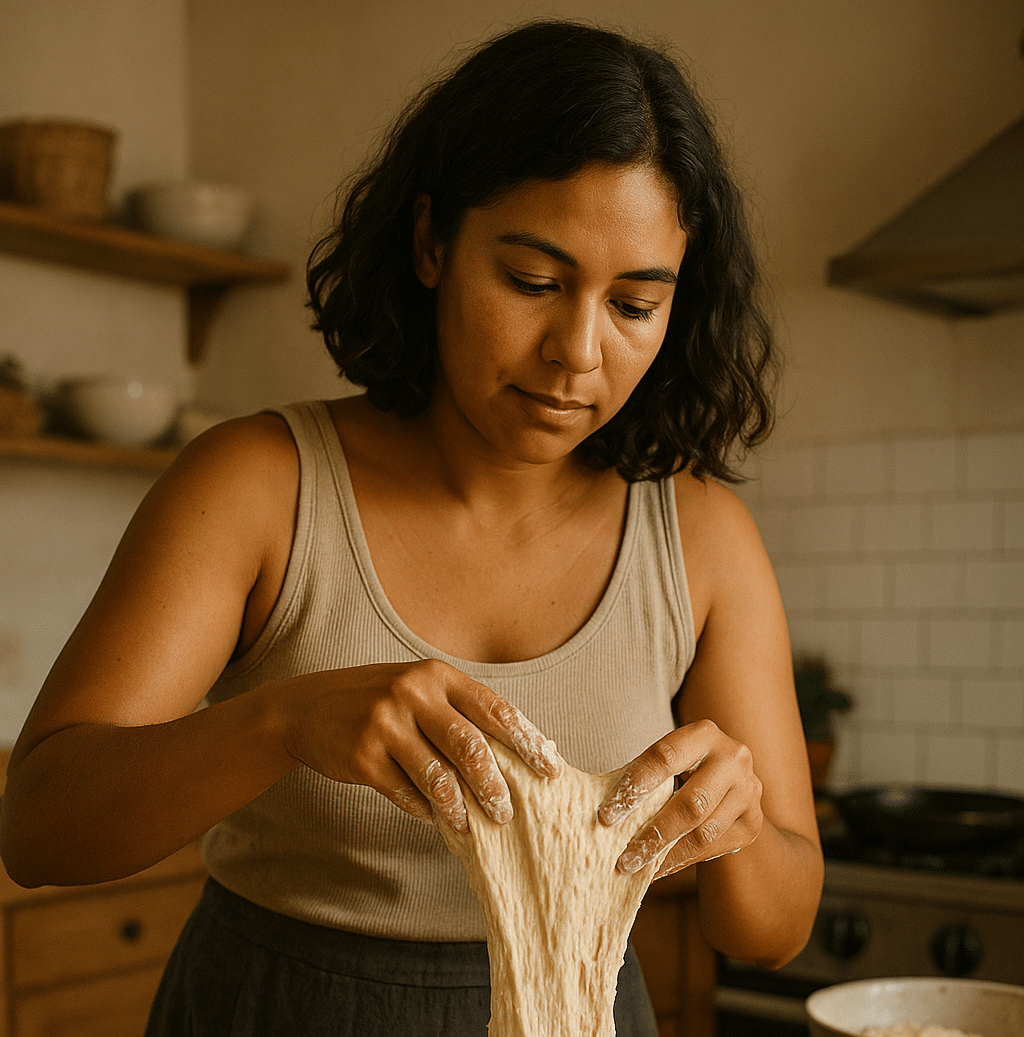Craving a crisp, golden crust with fluffy, olive-oil soaked goodness underneath? This focaccia recipe using sourdough discard transforms your leftovers into bakery-worthy bread with just a bit of time and love. Whether you’re a seasoned sourdough baker or new to working with discard, this recipe is a simple, satisfying way to turn what might be waste into a show-stopping loaf. In this article, you’ll find step-by-step guidance, helpful troubleshooting, and answers to common focaccia frustrations. Get ready to bake something golden, chewy, and gorgeously dimpled—your sourdough journey’s about to get even more delicious.
Table of Contents
My Favorite Focaccia Memory – with Sourdough Discard –
A Discard Discovery That Changed Everything
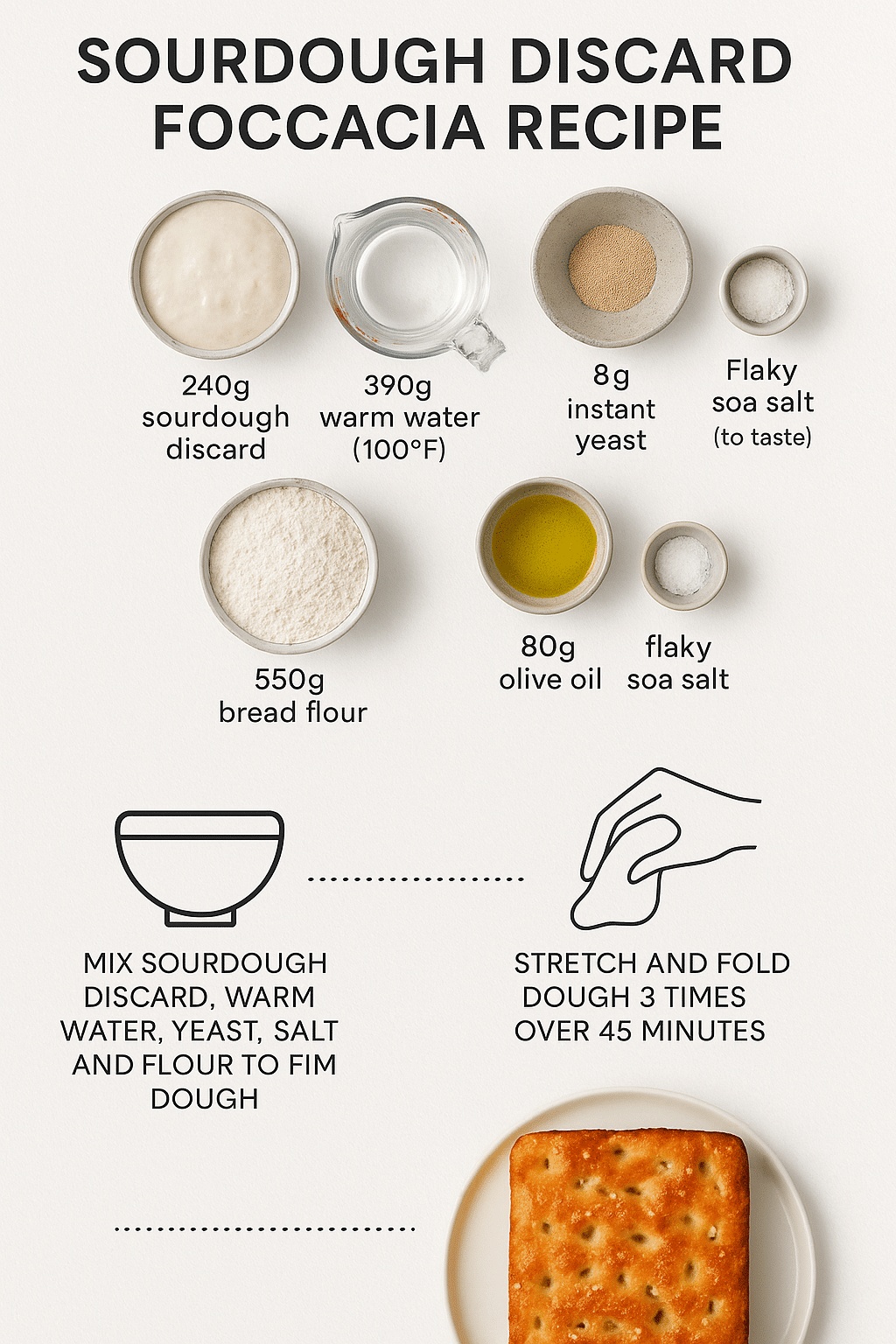
I’ll never forget the first time I tried a focaccia recipe using sourdough discard. My fridge was crammed with jars of bubbly leftovers I couldn’t bear to toss. The idea of baking something savory and stunning from that excess felt like a challenge—and a calling. I poured warm water over the discard, added flour, salt, yeast, and olive oil, and waited. When I finally pulled that golden, puffed loaf from the oven, it was magic. Crunchy at the edges, soft in the middle, and dotted with little pools of olive oil and sea salt. It was love at first tear.
Since then, this focaccia recipe using sourdough discard has become my go-to. It’s forgiving, unfussy, and always a hit. It turns a humble leftover into something glorious. Every time I make it, I’m reminded that baking doesn’t have to be complicated to be meaningful. Sometimes, it’s as simple as transforming what we already have—like a bowl of discard.
You don’t need a starter that’s at peak strength—just some bubbly discard, a bit of patience, and your favorite pan. Whether you’re serving it warm with soup or slicing it into sandwiches, this focaccia recipe using sourdough discard delivers every time. And it all starts with something we once thought of as waste.
If you’re looking for more ways to turn leftovers into gold, try this no-waste gluten-free discard recipe. And if you’ve ever wondered whether your starter’s still good, here’s how to spot mold and revive it safely.
Why This Recipe Works Every Time
What makes this focaccia recipe using sourdough discard so reliable? First, we use instant yeast alongside the discard. Discard alone doesn’t rise quickly—it’s tired and acidic. But paired with yeast, it contributes flavor while yeast handles the lift. The high hydration (almost 70%) gives the crumb that beautiful open structure, while a good glug of olive oil ensures it doesn’t dry out.
This is a no-knead dough. You’ll mix it, fold it, and let it rest. Time does the work for you. And yes, it’s very sticky—but that’s what makes it so airy. Don’t fight it, just keep your hands oiled. And if you’re new to high-hydration doughs, this focaccia recipe using sourdough discard is a great place to start.
How to Make the Dough (Mix, Fold & Rest)
Mixing the Dough Step-by-Step
This focaccia recipe using sourdough discard begins with a super simple mix. In a large bowl, whisk together your warm water and sourdough discard until well combined. The mixture may look cloudy—totally normal. Add the instant yeast and stir again to dissolve it. Then, sprinkle in the salt and stir to disperse it evenly.
Now it’s time for the flour. Add it in gradually, stirring with a silicone spatula or wooden spoon. The dough will feel very wet and shaggy, but don’t worry—that’s exactly what you want. High hydration helps create that soft, airy interior we all love in focaccia. Once everything is incorporated, drizzle in two tablespoons of olive oil and fold it into the dough gently.
The final dough will be sticky, stretchy, and loose—not firm like a traditional bread dough. That’s the magic of this focaccia recipe using sourdough discard. You’re creating gluten structure through rest, not kneading. Cover your bowl and let it rest for 30 minutes.
If you want more beginner-friendly guidance for working with wet doughs, check out this sourdough ciabatta tutorial for extra shaping confidence.
Folding & Bulk Fermentation
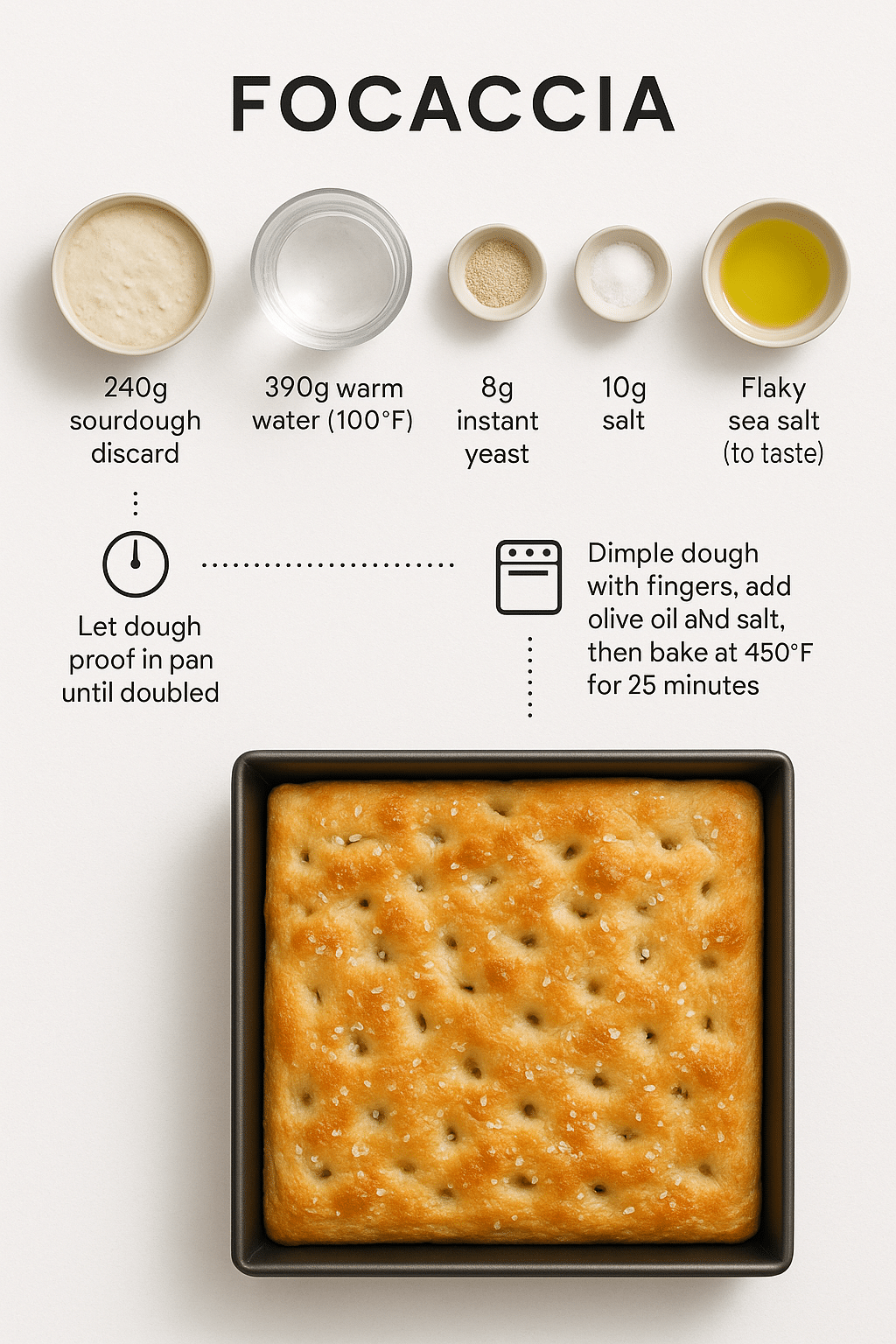
After the first rest, it’s time for stretch-and-folds. Using oiled hands, gently grab one edge of the dough, lift it up, and fold it over itself. Rotate the bowl and repeat three more times (north-south-east-west). This technique gently strengthens the dough without aggressive kneading.
Repeat this stretch-and-fold process every 30 minutes, 3–4 times total. After your final fold, cover the bowl and let it rest at room temperature for another 1–2 hours until it looks puffed and jiggly. You won’t see huge bubbles yet—but the dough should have noticeably risen and feel alive.
If you’re planning ahead, this dough is perfect for a slow cold ferment. After the final fold, you can cover and refrigerate it overnight for up to 18 hours. The flavor deepens beautifully, and you can shape and bake it straight from the fridge.
More on that option coming up in Part 4: Baking, Serving & Storage—another great way to handle discard dough.
Shaping, Proofing & Dimpling the Dough
Shaping the Dough for That Signature Crust
Once your dough has finished bulk fermentation—whether same-day or after an overnight chill—it’s time to shape. Generously oil a 9×13-inch baking pan with 2 tablespoons of olive oil. This isn’t just to prevent sticking—it also helps create that crisp, golden bottom crust focaccia is known for.
Using oiled hands or a silicone spatula, gently scrape the dough into the pan. It will be jiggly and loose, but that’s exactly what you want in a focaccia recipe using sourdough discard. Don’t stretch it aggressively. Instead, gently coax it to the edges by lifting and folding it under itself, letting it settle naturally. If it resists spreading, give it a 10-minute rest and then try again.
This soft, hydrated dough benefits from a gentle hand and a little patience. If your dough seems too sticky to handle, check out this post on discard cinnamon roll bites—I share extra tips there on managing wet, enriched doughs too.
Cover the pan with a clean towel or plastic wrap and let it rise at room temperature for 45–60 minutes, or until it looks puffy and bubbly. You’re not looking for a full double in size, just a soft and lively texture.
Dimpling & Final Prep
Here comes the fun part: dimpling. Drizzle the top of the dough with 2 more tablespoons of olive oil. Then, using your fingers (coated with oil to prevent sticking), press down into the dough to create dimples all over the surface. Let your fingers sink all the way to the bottom without punching through the dough.
Sprinkle the surface with flaky sea salt. You can also add rosemary, cherry tomatoes, or thinly sliced onions—this focaccia recipe using sourdough discard is endlessly customizable. Just remember, simplicity lets the sourdough flavor shine.
If you’re worried about dough sticking to the pan after baking, you’re not alone. Make sure your pan is generously oiled (don’t skimp!), and avoid using parchment—it traps steam. More sticky-pan solutions are coming in our FAQ section.
Looking for more discard inspiration with crisp edges and flexible shaping? Don’t miss my guide to discard bagels—a chewy, glossy triumph for leftover starter.
Baking, Serving & Sourdough Focaccia FAQs
Bake It Right—Crisp Bottom, Golden Top
Preheat your oven to 425ºF (218ºC). Once your dough is beautifully dimpled and the oven is hot, place the pan on the center rack. Bake for 22–26 minutes, or until the top is golden and the edges are deeply crisped. The olive oil will sizzle as it bakes, creating that signature crust. If you see pooling oil—that’s good. That’s flavor.
Let the bread cool in the pan for 5 minutes, then gently loosen it from the edges and lift it onto a wire rack. A short rest keeps the crust intact and crumb airy—cutting too soon can squash your masterpiece.
For another crusty bake that plays well with discard, check out my pretzel bread recipe—soft chew, salty top, perfect with mustard or cheese.
Serving, Storage & Make-Ahead Notes
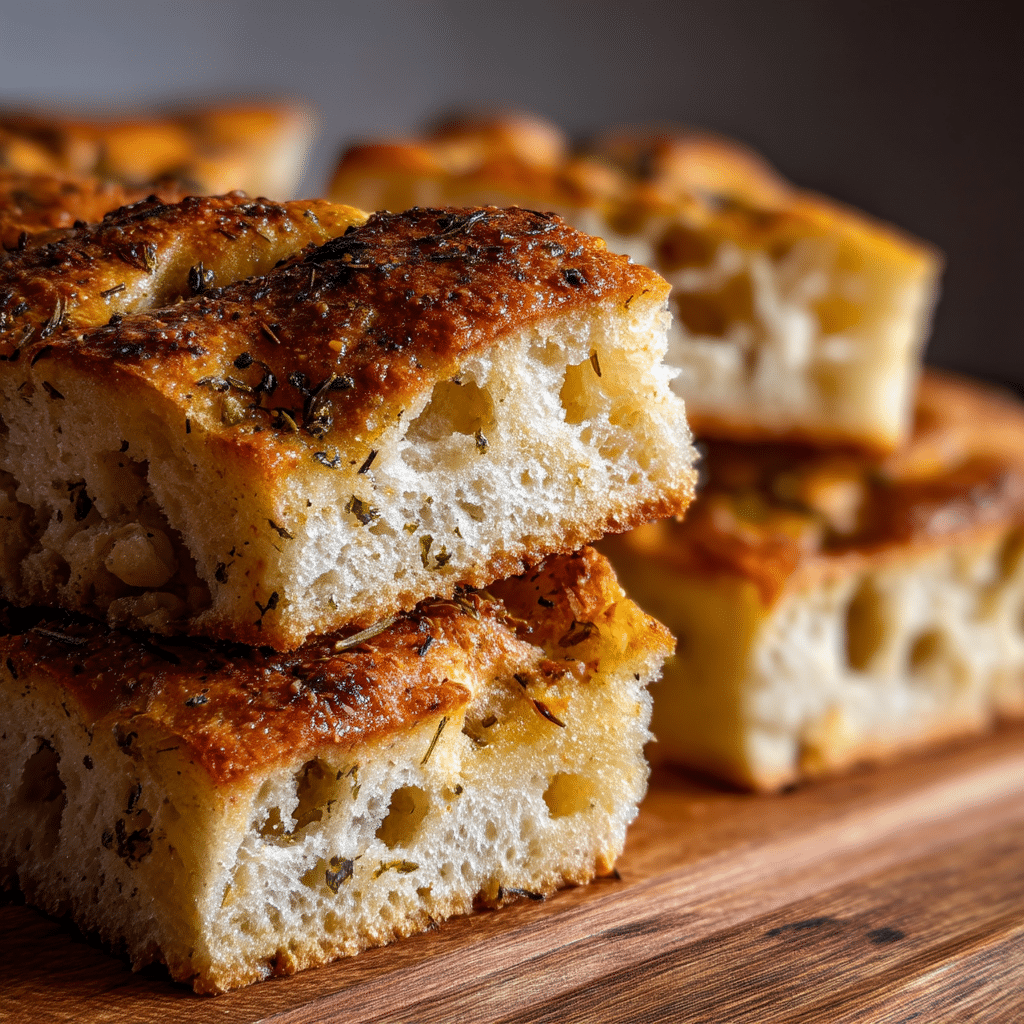
Focaccia is best the day it’s made but stores well for up to 3 days. Wrap in parchment and store in a container at room temp. To reheat, use a skillet or oven—not the microwave—to bring back the crunch.
Want to prep ahead? Chill your dough overnight after its final fold. The next day, shape it into your oiled pan and proof for an hour before baking. This cold-fermented sourdough focaccia develops deeper flavor and fits busy schedules.
Need help timing long ferments? My spelt sourdough post has a full timeline you can follow.
FAQs: Sourdough Focaccia Troubleshooting
My dough is too wet and sticky—what can I do?
High hydration is key to that airy texture. Use oiled hands or a dough scraper. Chill the dough briefly if it’s tough to manage.
Why isn’t my dough rising?
Double-check your yeast and water temperature. Old discard or cool room temps can slow fermentation. Give it time or move it to a warmer spot.
The focaccia is sticking to my pan. Help!
Use at least 2 tablespoons of oil to coat your pan. Skip parchment—moisture gets trapped underneath. Let the bread rest before lifting out.
Can I refrigerate the dough overnight?
Absolutely. Chill the dough up to 18 hours after folding. The next day, shape and bake. This flexible method lets you bake fresh on your schedule.
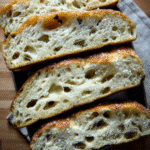
Focaccia Recipe Using Sourdough Discard
- Total Time: 40 minutes
- Yield: 1 9×13-inch focaccia
Description
This focaccia recipe using sourdough discard creates a golden, airy loaf with crisp edges and deep flavor. Perfect for beginner bakers, it’s a no-knead, no-waste way to enjoy homemade bread.
Ingredients
- 240g sourdough discard
- 390g warm water (100ºF)
- 8g instant yeast
- 10g salt
- 550g bread flour
- 80g olive oil
- Flaky sea salt, to taste
Instructions
- Whisk sourdough discard and warm water in a large bowl until well combined.
Add instant yeast, salt, and bread flour. Mix into a shaggy, wet dough.
Fold in 2 tablespoons of olive oil. Cover and rest for 30 minutes.
Do 3–4 stretch-and-folds, spaced every 30 minutes, to strengthen the dough.
Let rest 1–2 hours, until the dough looks puffy and airy.
Transfer to a generously oiled pan. Gently stretch the dough to fit.
Proof 45–60 minutes, uncovered, until the dough looks bubbly and jiggly.
Use oiled fingers to dimple the dough, then drizzle with olive oil and sprinkle flaky salt.
Bake at 425ºF for 22–26 minutes until the top is golden and edges are crispy.
Cool for 5 minutes in the pan, then lift out and finish cooling on a wire rack.
Notes
Use oiled hands to manage sticky dough.
Cold ferment overnight for deeper flavor.
Add toppings like rosemary, garlic, or tomatoes if desired.
- Prep Time: 15 mins
- Cook Time: 25 mins
- Category: Sourdough Discard Recipes
- Method: Baking


